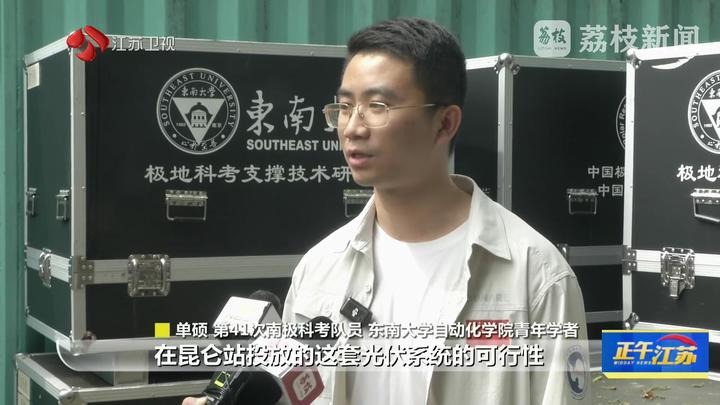Southeast University powers Antarctic expedition with breakthroughs in smart energy systems

China's 41st Antarctic expedition team returns to Shanghai. [Photo/ourjiangsu.com]
China's 41st Antarctic expedition was successfully completed on April 8. Among the returning team members was Shan Shuo, a young scholar from Southeast University, who played a key role in upgrading and maintaining an unmanned energy system developed by the university.
During the nearly six-month mission, Shan and his teammates braved extreme conditions to ensure the stable operation of the intelligent unmanned energy systems at two Antarctic research stations.

Shan Shuo, a young scholar from Southeast University, participates in the mission. [Photo/ourjiangsu.com]
A highlight of the mission was Shan's work at the Kunlun Station, located at 4,087 meters above sea level, where he successfully collected 400 hours of multi-angle solar irradiance data during the polar day. This marks the first time a Southeast University team has fully captured the solar intensity variation and photovoltaic output data at the station, providing valuable support for the efficient use of solar energy in polar environments.
Since contributing to the establishment of the first reliable support platform at Kunlun Station in 2009, Southeast University's research team has continued to provide essential support for energy system construction and maintenance in Antarctic expeditions. In this mission, the team leveraged a self-developed digital twin operation platform to enable remote intelligent monitoring and fault warning for energy systems.
Southeast University will focus on increasing clean energy usage, advancing unmanned intelligent maintenance, and enhancing multi-module system coordination to build a more stable, smart, and sustainable polar energy support system.


 Jiangsu Universities Driving Progress in BRI Cooperation
Jiangsu Universities Driving Progress in BRI Cooperation